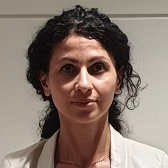Construction 4.0: Sensors and Process for Building Management
A special issue of Sensors (ISSN 1424-8220). This special issue belongs to the section "Intelligent Sensors".
Deadline for manuscript submissions: closed (25 November 2022) | Viewed by 5016
Special Issue Editors
Interests: sustainable rehabilitation; historical buildings; green infrastructures; construction site management
Special Issues, Collections and Topics in MDPI journals
Interests: sustainable rehabilitation; historical buildings; renewable energy; green infrastructures; construction site management; recycled and smart materials
Special Issues, Collections and Topics in MDPI journals
Interests: IoT for construction; construction site management; Construction 4.0; passive cooling; chimney ventilation; comfort indoor; sustainable historical buildings; green infrastructures
Special Issues, Collections and Topics in MDPI journals
Interests: filters; integrated circuits; MMIC; sensors; sensors interfaces
Special Issues, Collections and Topics in MDPI journals
Special Issue Information
Dear Colleagues,
the concept of Construction 4.0 is beginning to gradually establish itself as a great revolution in the construction sector. Building 4.0 is part of the concept of Industry 4.0 in construction and involves the use of connectivity technologies for decision-making in real time: it can be defined as a decentralized connection between physical space and cyberspace through ubiquitous connectivity. This type of connection can be referred to the technological approach that is involved in BIM; in fact, it is possible to establish a technological connection between construction sites and models. In these models, investigations of the effects of human presence and management is essential, but with the advent of building 4.0, certain technologies can gradually replace the roles of humans in situ. Building 4.0 is based on broader spectrum technologies that involve the use of sensors, the Internet of Things, cloud computing, and BIM models in order to automate the process. So-called smart construction sites start from the beginning of construction and continue throughout the construction process and throughout the life cycle of the building. In this way, sensors and systems allow real-time control through simulations of the building during all aspects of its construction. These models are the most useful in the construction phase and can be combined with sensors, drones, robotics, and monitoring systems to control all aspects of performance, even during the maintenance phase of the building.
This integration will allow a multilevel interconnection between human beings and technology in order to create a decentralized decision-making process. These models can be managed through decision-making platforms that connect the construction site with smart factories and with connected buildings and cities.
Topics of interest for this Special Issue include but are not limited to:
- Efficient solutions for determining and integrating sensors/actuators for Construction 4.0;
- Innovative sensing strategies for energy-efficient process monitoring;
- Real-time manufacturing energy data analysis and diagnostics;
- Internet of Things (IoTs);
- Cyber–Physical Systems (CPS);
- Solutions for a smart and efficient construction site;
- BIM and sensors for construction sites;
- Improving site safety;
- Reducing risks;
- Enviromental protection;
- Sustainable production systems;
- Digital twins.
Prof. Pierluigi De Berardinis
Prof. Dr. Marianna Rotilio
Dr. Eleonora Laurini
Prof. Dr. Vincenzo Stornelli
Guest Editors
Manuscript Submission Information
Manuscripts should be submitted online at www.mdpi.com by registering and logging in to this website. Once you are registered, click here to go to the submission form. Manuscripts can be submitted until the deadline. All submissions that pass pre-check are peer-reviewed. Accepted papers will be published continuously in the journal (as soon as accepted) and will be listed together on the special issue website. Research articles, review articles as well as short communications are invited. For planned papers, a title and short abstract (about 100 words) can be sent to the Editorial Office for announcement on this website.
Submitted manuscripts should not have been published previously, nor be under consideration for publication elsewhere (except conference proceedings papers). All manuscripts are thoroughly refereed through a single-blind peer-review process. A guide for authors and other relevant information for submission of manuscripts is available on the Instructions for Authors page. Sensors is an international peer-reviewed open access semimonthly journal published by MDPI.
Please visit the Instructions for Authors page before submitting a manuscript. The Article Processing Charge (APC) for publication in this open access journal is 2600 CHF (Swiss Francs). Submitted papers should be well formatted and use good English. Authors may use MDPI's English editing service prior to publication or during author revisions.
Keywords
- construction site management
- sensors
- Internet of Things
- ICT
- BIM
- sustainability
- management
- smart buildings
- Construction 4.0
- digital twins
Benefits of Publishing in a Special Issue
- Ease of navigation: Grouping papers by topic helps scholars navigate broad scope journals more efficiently.
- Greater discoverability: Special Issues support the reach and impact of scientific research. Articles in Special Issues are more discoverable and cited more frequently.
- Expansion of research network: Special Issues facilitate connections among authors, fostering scientific collaborations.
- External promotion: Articles in Special Issues are often promoted through the journal's social media, increasing their visibility.
- e-Book format: Special Issues with more than 10 articles can be published as dedicated e-books, ensuring wide and rapid dissemination.
Further information on MDPI's Special Issue polices can be found here.









